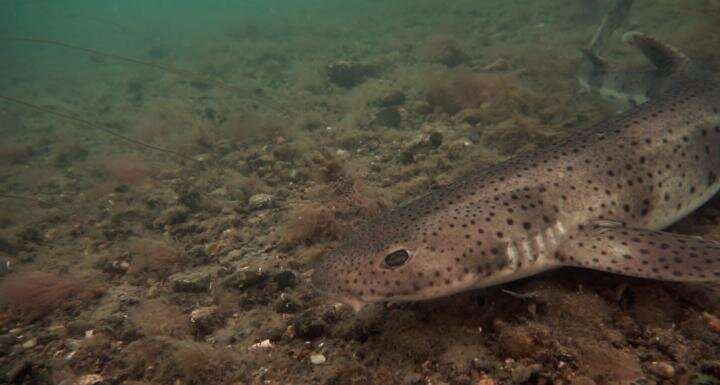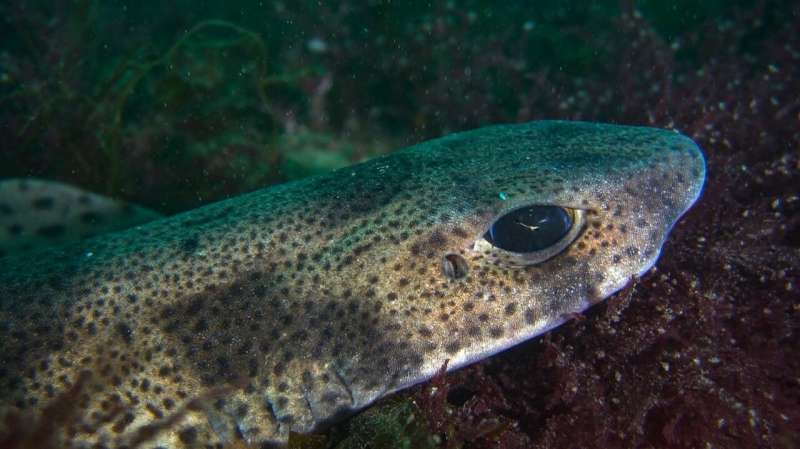Plastics found in sea-bed sharks

Microplastics have been found in the guts of sharks that live near the seabed off the UK coast. University of Exeter scientists studied four species of demersal (seabed-dwelling) shark.
Of the 46 sharks examined, 67% contained microplastics and other man-made fibres.
A total of 379 particles were found and—though the impact on the sharks' health is unknown—the researchers say it highlights the "pervasive nature of plastic pollution".
"Our study presents the first evidence of microplastics and anthropogenic fibre contaminants in a range of native UK demersal shark species," said lead author Kristian Parton, of the Centre for Ecology and Conservation at Exeter's Penryn Campus in Cornwall.
Commenting on the possible sources of the particles, he added: "We were surprised to find not only microplastics but also particles such as synthetic cellulose, which is most commonly found in textiles (including disposable hygiene items like facemasks) and clothing.
"When clothes are washed, or items are discarded as litter, tiny fibres are released and these often flow into water sources and out to sea.
"Once in the sea, microfibres can either float or sink to the bottom, which is where these sharks live.

"The fibres could then be ingested via the sharks' food, which is mostly crustaceans, or directly through the sediment on the seabed.
"In terms of the other types of microplastics we found, many of these may have come from fishing lines or nets."
The research team, which included scientists from Greenpeace Research Laboratories, examined the stomachs and digestive tracts of four species: small-spotted catshark, starry smooth-hound, spiny dogfish and bull huss.
These species can be found at varying depths from 5-900m, but usually live and feed near the sea floor.
Though the study is based on a modest sample size, the findings suggest larger sharks contained more particles. No differences were found based on sex or species.
The study was conducted in Cornwall, UK, using sharks caught as "bycatch" (by accident) in a demersal hake fishery, fishing in and around the North-East Atlantic and Celtic Sea.
Study co-author Professor Tamara Galloway, of Exeter's Global Systems Institute, said: "We were not expecting to find microfibres from textiles in so many of our native shark species.
"Our study highlights how important it is to think before we throw things away."
Dr. Laura Foster, Head of Clean Seas at the Marine Conservation Society, added: "The new research from into these iconic shark species around the UK shows high levels of microplastic ingestion, with 95% of the contaminants found being fibrous."
More information: Investigating the presence of microplastics in demersal sharks of the northeast Atlantic, Scientific Reports (2020). DOI: 10.1038/s41598-020-68680-1
Journal information: Scientific Reports
Provided by University of Exeter




















